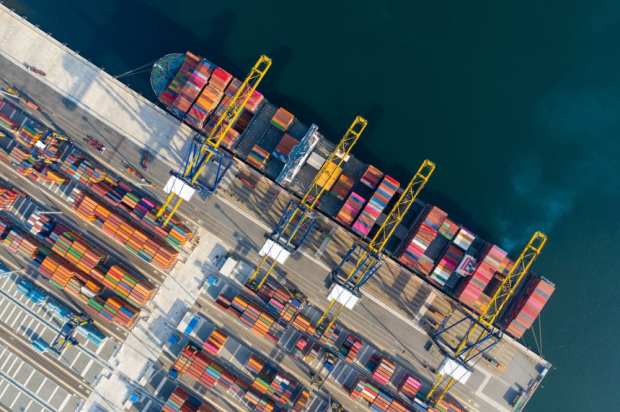Trade Disputes Make Long-Lasting Mark On Global Supply Chains

While the U.S. and China continue the tedious process of smoothing out trade tensions, possible new trade disputes are emerging between the U.S. and Europe, with analysts warning of long-lasting impacts on the world’s supply chain routes.
According to recent reports, S&P Global Market Intelligence‘s trade data unit Panjiva released a new analysis on the U.S.-China trade disputes that led to tariffs of between 10 percent and 25 percent, imposed on an estimated $250 billion worth of Chinese goods. As a result, experts said, retailers and manufacturers have scrambled to avoid the resulting cost hikes, forcing not only a decline in trade volume between the two countries, but a shifting of supply chain routes and supplier bases that could last well after the U.S. and China come to terms with a favorable trade agreement.
Panjiva said last week that a range of retailers saw their imports on China-made items drop in the first quarter of 2019, including goods imported by IKEA, Home Depot and Target. The appliance sector also saw declines, particularly with refrigerators coming in from China. These businesses have since shifted their import strategies elsewhere. While Chinese refrigerator imports dropped by 24.1 percent during Q1, imports “from South Korea and Mexico jumped 31.8 percent and 32 percent, respectively.”
Panjiva’s report said, “A major factor in that shift has been a rearrangement in supply chains by Samsung Electronics and LG Electronics.”
Other industries that have seen shifting supply chains include the auto sector, with tire imports from China declining as imports from Vietnam and South Korea are on the rise. Late last year, Cooper Tire & Rubber Company announced a joint venture in Vietnam, an initiative that the firm’s CFO Christopher Eperjesy said in February would “diversif[y] our sourcing to protect against risk, including tariffs.”
Reports noted that Cooper Tire posted a $34 million write-down on its manufacturing joint venture in China.
Long-Lasting Impacts
While the U.S. and China are working toward a resolution (the countries have scheduled another round of meetings to discuss a possible trade deal, according to The Wall Street Journal), experts have said that organizations’ efforts to reroute their supply chains to avoid China could remain even after a resolution.
Last February, Harvard Business School Professor Willy Shih wrote in an article for Forbes that trade disputes represent a bigger trend in supply chain management: the “new normal” of supply chain uncertainty.
“This is driving a major rethink of global supply chains,” he stated. “So, whether [U.S. President Donald] Trump and [China President] Xi [Jinping] come to a deal or not, some major changes are already afoot, and these promise to change the shape of trade between the two countries.”
With organizations shifting their import strategies to other markets, like South Korea and Mexico, such disputes promise to change the shape of U.S. trade for these markets as well.
More Changes Brewing
Shih’s prediction of the “new normal” for supply chain volatility, and the need for risk mitigation, appears to hold true for now. As the U.S. and China work on an agreement, discussions of a new trade dispute between the U.S. and Europe are afoot.
Reports in the BBC on Wednesday (April 17) noted that the U.S. has proposed trade tariffs for $20 billion worth of U.S. goods, resulting from a dispute over ongoing subsidies on Boeing. The U.S. had previously threatened trade tariffs on an estimated $11 billion worth of goods linked to Airbus subsidies, reports said. That’s despite previous discussions between the two jurisdictions that had aimed to lower the trade barriers between the U.S. and EU.
Analysts noted, though, that both sides are awaiting consultation from the World Trade Organization, which will provide guidance on what action each side can take — making it a significantly different situation from the U.S.-China dispute. However, such trade tariffs could nonetheless continue to force importers to shift their supply chains for the long term.
